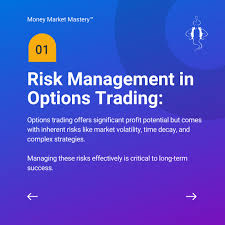Introduction
Understanding Option Expiration: What Every Trader Needs to Know is essential for navigating the options market. Option expiration marks the date when an option contract ceases to exist, making it a critical moment for traders. The impact of expiration on pricing, volatility, and risk can determine the profitability of an options strategy. Knowing how to manage options before they expire helps traders avoid losses and maximize their trading potential.
What is Option Expiration?
Option Expiration: What Every Trader Needs to Know starts with understanding what option expiration means. Every option contract has a set expiration date, usually the third Friday of the month for standard options. However, some options have weekly, quarterly, or even custom expiration dates. Once an option expires, it is either exercised, assigned, or becomes worthless, depending on whether it is in-the-money (ITM) or out-of-the-money (OTM).
The Impact of Expiration on Option Pricing
One of the key elements in Option Expiration: What Every Trader Needs to Know is the effect of expiration on option pricing. As expiration nears, time decay (Theta) accelerates, reducing an option’s extrinsic value. This phenomenon is crucial for both buyers and sellers:
- For Option Buyers: As time passes, the likelihood of profiting from an option decreases unless the underlying asset moves in the desired direction.
- For Option Sellers: Sellers benefit from time decay since options lose value, allowing them to profit if the contracts expire worthless.
Traders must factor in time decay when deciding whether to hold or close an option position.
In-The-Money vs. Out-Of-The-Money Expirations
Another critical topic in Option Expiration: What Every Trader Needs to Know is determining if an option is ITM or OTM at expiration.
- ITM Options: These have intrinsic value and are automatically exercised, meaning the option holder will either buy or sell the underlying asset.
- OTM Options: These expire worthless, leading to a total loss of the premium paid by the option buyer, while the seller retains the premium as profit.
Traders should always monitor their positions before expiration to avoid unexpected assignments or losses.
Strategies for Managing Option Expiration
Effective trading requires planning around expiration dates. Option Expiration: What Every Trader Needs to Know highlights key strategies to handle expiring options:
- Close Positions Before Expiration: Many traders choose to exit their positions before expiration to avoid assignment risks and unpredictable price swings.
- Use Rolling Strategies: If an option position is at risk, rolling it to a later expiration date can extend the trade’s potential profitability.
- Monitor Liquidity and Open Interest: High liquidity ensures smoother trade execution, while low open interest may lead to wider bid-ask spreads, increasing costs.
By implementing these strategies, traders can better manage the risks associated with option expiration.
Automatic Exercise and Assignment Risks
A crucial part of Option Expiration: What Every Trader Needs to Know is understanding automatic exercise and assignment. Most brokers automatically exercise ITM options, typically those that close at least $0.01 ITM. However, traders must be aware of their broker’s specific policies to prevent unwanted surprises. Additionally, physically settled options require actual asset delivery, whereas cash-settled options settle based on the price difference at expiration.
Option Expiration: Essential Insights for Every Trader
Introduction
Grasping the intricacies of option expiration is a crucial step toward becoming a proficient trader. Expiration marks the final day an options contract remains valid, determining whether it results in a profit, loss, or expires worthless. This key event influences option pricing, volatility, and overall market dynamics. Traders who understand expiration mechanics can develop more effective strategies, minimize risks, and optimize their returns.
What is Option Expiration?
Every option contract has a predetermined expiration date, which dictates its validity. Standard options typically expire on the third Friday of each month, while some offer weekly or quarterly expiration dates. When an option reaches expiration, it will either be exercised, assigned, or become worthless, depending on its position:
- In-the-Money (ITM): The option holds intrinsic value and is usually exercised.
- Out-of-the-Money (OTM): The option lacks intrinsic value and expires worthless.
Understanding expiration dates is critical for traders, as they directly impact an option’s value and potential profitability.
The Impact of Expiration on Option Pricing
Expiration plays a significant role in determining an option’s price. As the expiration date nears, time decay (Theta) accelerates, gradually eroding the option’s extrinsic value. This effect has different implications for buyers and sellers:
- For Buyers: The closer an option gets to expiration, the less time there is for the underlying asset to move favorably. This makes time decay a major concern for buyers.
- For Sellers: Time decay works in favor of option sellers, as the contract loses value over time, increasing the chances of the option expiring worthless.
Traders should account for time decay when choosing their strategies to maximize profits and minimize risks.
ITM vs. OTM at Expiration
A critical factor traders must consider is whether an option is in-the-money (ITM) or out-of-the-money (OTM) at expiration.
- ITM Options: These have intrinsic value and will be exercised, meaning the trader will buy or sell the underlying asset at the predetermined strike price.
- OTM Options: Lacking intrinsic value, these options expire worthless, leading to a total loss for buyers, while sellers retain the premium as profit.
Monitoring an option’s status as expiration nears helps traders make timely decisions and avoid unnecessary risks.
Effective Strategies for Managing Option Expiration
Traders can take proactive steps to manage expiring options effectively:
- Closing Positions Before Expiration: Exiting a trade before expiration can help traders avoid unwanted assignments or price fluctuations.
- Rolling Positions: Extending an option’s expiration date by rolling it into a later contract can provide more time for the trade to work in the trader’s favor.
- Watching Liquidity and Open Interest: High liquidity ensures better trade execution, while low open interest may result in wider bid-ask spreads and higher trading costs.
By implementing these strategies, traders can mitigate risks and optimize their chances of success.
Automatic Exercise and Assignment
Understanding automatic exercise and assignment is essential to prevent unexpected outcomes. Most brokers automatically exercise ITM options at expiration if they are at least $0.01 ITM. However, traders should confirm their broker’s specific policies to avoid surprises. Additionally:
- Physically Settled Options: These require the trader to buy or sell the actual underlying asset.
- Cash-Settled Options: These are settled based on the price difference at expiration, eliminating the need for physical asset transactions.
Being aware of these processes can help traders better prepare for expiration day




